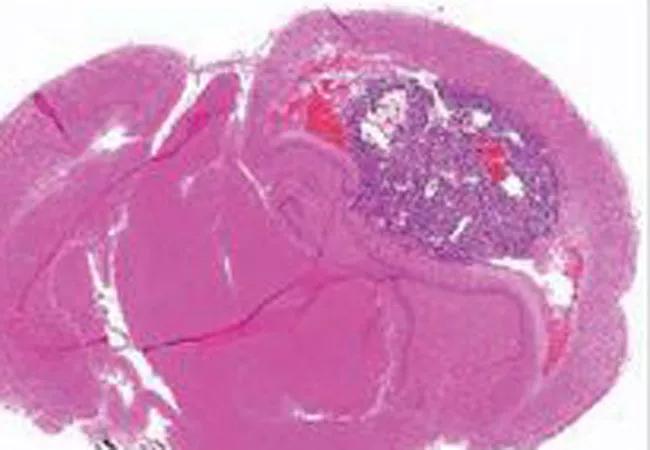Hyperthermia augments radiation therapy

For more than 5,000 years, humans have used heat to treat cancer. Ancient Egyptian texts written on papyrus, for instance, describe the use of cauterization to remove breast tumors.
Advertisement
Cleveland Clinic is a non-profit academic medical center. Advertising on our site helps support our mission. We do not endorse non-Cleveland Clinic products or services. Policy
More recently, studies have shown that heat can aid cancer treatments, yet the practice, known as hyperthermia, is only used regularly at a small number of medical centers around the country. “We are the only center in Ohio that offers it,” says Jennifer Yu, MD, PhD, Department of Radiation Oncology and Department of Stem Cell Biology and Regenerative Medicine, Cleveland Clinic.
Dr. Yu, who is vice president-elect of the Society for Thermal Medicine, published a study in 2015 in Cancer Research, looking at how hyperthermia affects glioma stem-like cells (GSC) a subpopulation of cells in tumors that are believed to mediate self-renewal and relapse in glioblastoma — the most common form of malignant primary brain cancer.
She and her colleagues found that after radiation therapy, GSCs use a cell signaling pathway called PI3K-AKT to extend their survival, but when GSCs are exposed to hyperthermia beforehand, oncologists can suppress that pathway. This makes the GSCs more sensitized to the radiation, allowing for more cancer cells to be killed.
“When we did this in animal models,” Dr. Yu says, “we were able to extend animal survival just by giving heat before the radiation.”
Dr. Yu says oncologists use high heat for certain types of ablative cancer treatments — ultrasound ablation, laser ablation and radio frequency ablation. “With those types of treatments,” she says, “the heat itself is sufficiently high enough to cook the cancer.”
With other hyperthermic treatments, Dr. Yu says, lower temperatures are used. In those cases, the heat does not kill off the cancer cells outright but can prime them to be more susceptible to radiation and chemotherapy.
Advertisement
In the 2015 study, the investigators cultured GSCs and tested them with hyperthermia alone, radiation alone or combined radiation and hyperthermia. They found that when both methods were used together, fewer GSCs survived, fewer GSCs were able to self-renew and fewer GSCs were able to repair DNA efficiently after radiation in order to resist apoptosis. They also found that the reason for these effects appeared to be suppression of AKT, which activates the pathway that GSCs use to extend their survival.
Later they performed similar tests in mice with glioblastoma and found the animals who received both treatments survived longer than those who received only radiation.
“We found that if you deliver hyperthermia before radiation, you suppress those radiation-induced survival signals,” Dr. Yu says. “This allows you to sensitize cancer stem cells to radiation.”
The 2015 study inspired Dr. Yu’s team to open a phase 0 clinical trial trying to shorten the time for patients with glioblastoma between laser thermal therapy and their adjuvant treatment.
Shortening that time period would allow oncologists to take advantage of the biological properties of the heat therapy, Dr. Yu says, such as sensitizing the cancer stem cells to radiation, priming the immune system and opening up the blood-brain barrier.
“Hyperthermia can enhance the anti-tumor immune response of the body,” Dr. Yu says. “We know that laser ablation and radiation can kill tumor cells. As the cells die, tumor antigens are released and recruit and activate immune cells into the tumor microenvironment to fight the cancer cells. Combining these treatments should mount a robust immune response to kill the cancer cells.
Advertisement
“We also know that laser hyperthermia causes breakdown of the blood-brain barrier so that chemotherapy can penetrate into the tumor bed more effectively. This combination of hyperthermia, radiation and chemotherapy can work together through many mechanisms to kill tumor cells.”
She’d like to see more physicians practice hyperthermia for cancer control, pointing out that studies have shown it works for a wide range of cancers including breast cancers, melanoma, sarcomas, recurrent rectal cancer, prostate cancers, bladder cancers and cervical cancers.
“The combination treatment of hyperthermia and radiation improves tumor control significantly,” she says, “usually about 50 percent more than radiation alone. It is a very powerful treatment.”
Feature image: Thermoradiotherapy suppressed GBM growth and increased survival. Representative images of cross-sections (hematoxylin and eosin stained) of mouse brains harvested on day five after treatment.
Advertisement
Advertisement

First full characterization of kidney microbiome unlocks potential to prevent kidney stones

Researchers identify potential path to retaining chemo sensitivity

Large-scale joint study links elevated TMAO blood levels and chronic kidney disease risk over time

Investigators are developing a deep learning model to predict health outcomes in ICUs.

Preclinical work promises large-scale data with minimal bias to inform development of clinical tests

Cleveland Clinic researchers pursue answers on basic science and clinical fronts

Study suggests sex-specific pathways show potential for sex-specific therapeutic approaches

Cleveland Clinic launches Quantum Innovation Catalyzer Program to help start-up companies access advanced research technology